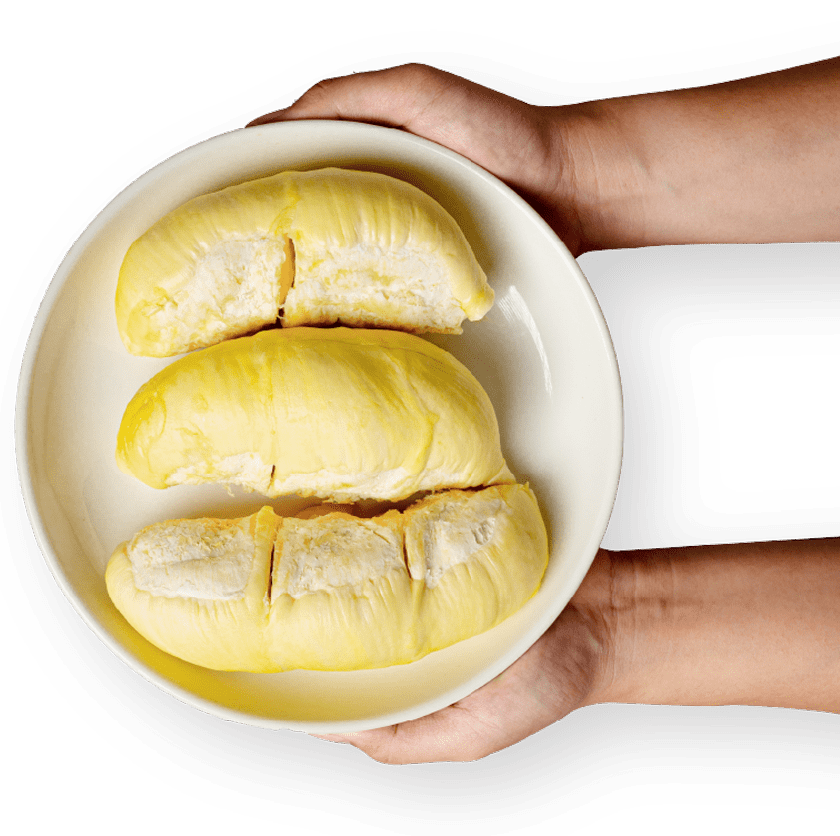30 May 10 Finest Types of Durian to Try in Malaysia

Durian – love it or hate it, this King of Fruits is a Malaysian legend.
Its pungent aroma can clear a room, but its creamy, custard-like flesh is a craving for many!
If you’re curious about exploring the types of durians in Malaysia or a seasoned aficionado seeking new flavor experiences, this is your perfect guide!
Let’s dive into the must-try durian varieties from Malaysia (plus, find out where to get the best ones!).
D200 Black Thorn
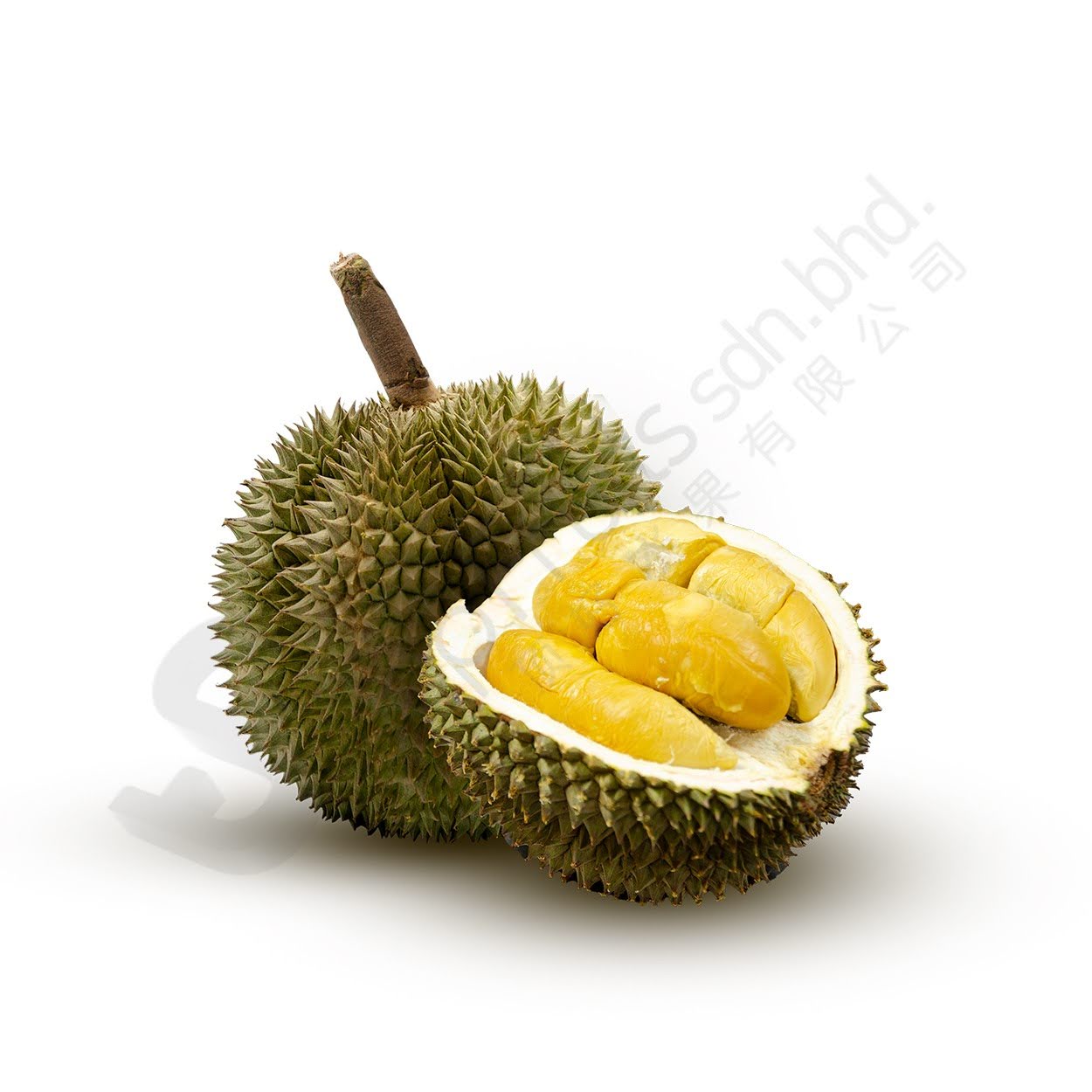
Image source: Top Fruits
Among these esteemed cultivars, the D200 Black Thorn stands out for its unique shape, flesh, and captivating taste.
Here’s a breakdown of its key characteristics:
- Code: D200.
- Origin: It was first cultivated in Penang, Malaysia.
- Shape: Rounder shape, almost resembling a bloated pentagon or star.
- Spikes: Shorter and sparser spikes compared to other durians. The tips of these spikes may have a brownish or grayish tinge.
- Flesh: Color varies from yellow to golden orange or even a pinkish-orange hue.
- Texture: Soft and creamy.
- Taste: Sweet with a slightly bitter aftertaste and a hint of alcohol.
- Seed Size: A combination of small to medium seeds.
- Season: Late July or early August.
D197 Musang King
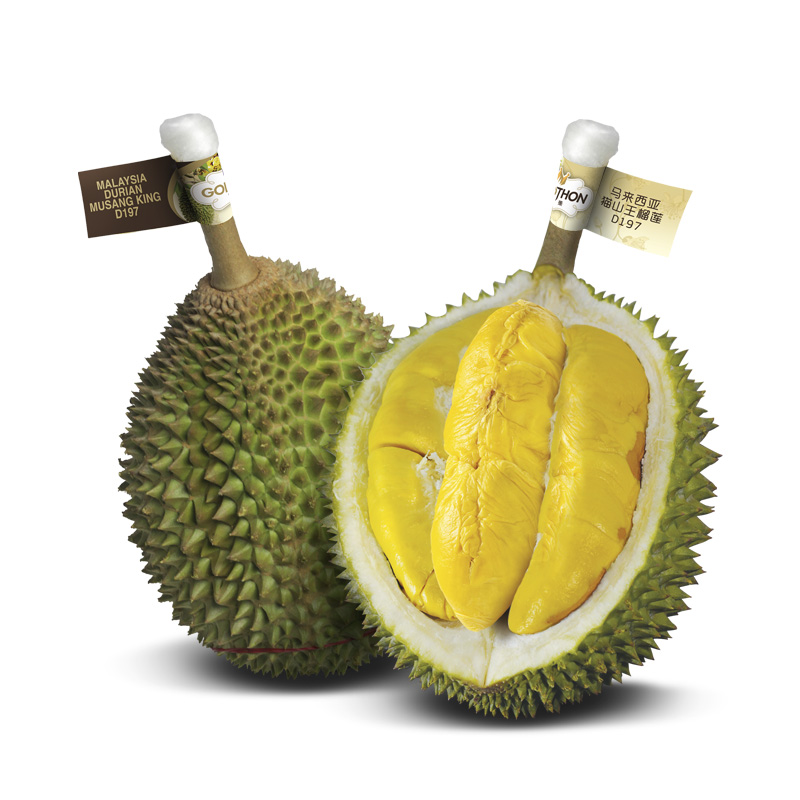
Image source: Top Fruits
The D197 Musang King durian, also known as Mao Shan Wang (a.k.a. MSW or directly translated as ‘Cat Mountain King’) in Mandarin, is widely regarded as the king of all durians!
The highly sought-after Musang King durian also reigns supreme as a durian paste, offering a versatile ingredient that allows F&B to create new durian-based products and desserts.
- Code: D197
- Origin: Gua Musang, Kelantan.
- Shape: Oval or egg-shaped, with a slightly elongated form. They are known for their larger size compared to other varieties.
- Spikes: Sharp and triangular spikes that are often green but can also have a brownish tinge. These spikes are more spaced out compared to some other durian varieties, with prominent seams visible between them.
- Flesh: Vibrant golden yellow, with a slight shade variation depending on the ripeness.
- Texture: Incredibly thick, creamy, and custard-like, with minimal fiber.
- Taste: Boasts a rich, creamy sweetness with a hint of bitterness that lingers on the palate. Some describe it as having a subtle caramel or buttery taste, further adding to its luxurious flavor.
- Seed Size: Relatively small.
- Season:
- June and July (peak season throughout Malaysia).
- Mid-May (earlier season in Pahang, Malaysia).
- Late May to early September (in Penang, Malaysia).
D24 Sultan King
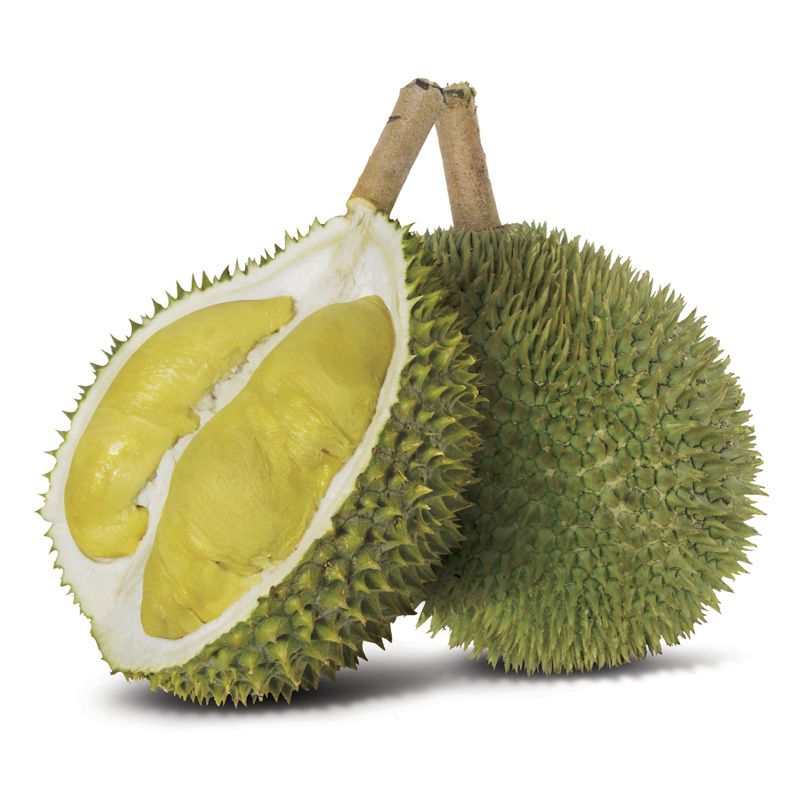
Image source: Top Fruits
D24 durians are known to be quite expensive compared to other varieties due to their limited production and high demand.
Beyond its delicious flesh, the D24 Sultan King durian boasts a rich history and interesting reputation:
- Code: D24
- Origin: Bukit Merah, Malaysia.
- Shape: Ellipsoidal, or even heart-shaped, with a short stem. One distinguishing feature is the presence of bulbous, curved bumps on one side, giving it an uneven appearance.
- Spikes:
- Spikes are sharp, pointed, and round, ranging in colors from green, brown, and yellow.
- They grow in clusters and overlap each other, partially obscuring the seams that run along the length of the fruit.
- Flesh: Color ranges from pale cream white to a mustard yellow, with some darker patches that tend to have a more bitter taste.
- Texture: Thick, slightly milky, soft, moist (slightly more moist than Musang King), and creamy with a moderate aroma.
- Taste: Offers a good balance of bittersweet notes, with some hints of an alcoholic taste adding complexity. This makes it a good option for those new to durian as it’s not overwhelmingly sweet or bitter.
- Seed Size: Big seeds.
- Season: Varies depending on geographical regions in Malaysia but can be generally found throughout December to February.
D198 Golden Phoenix
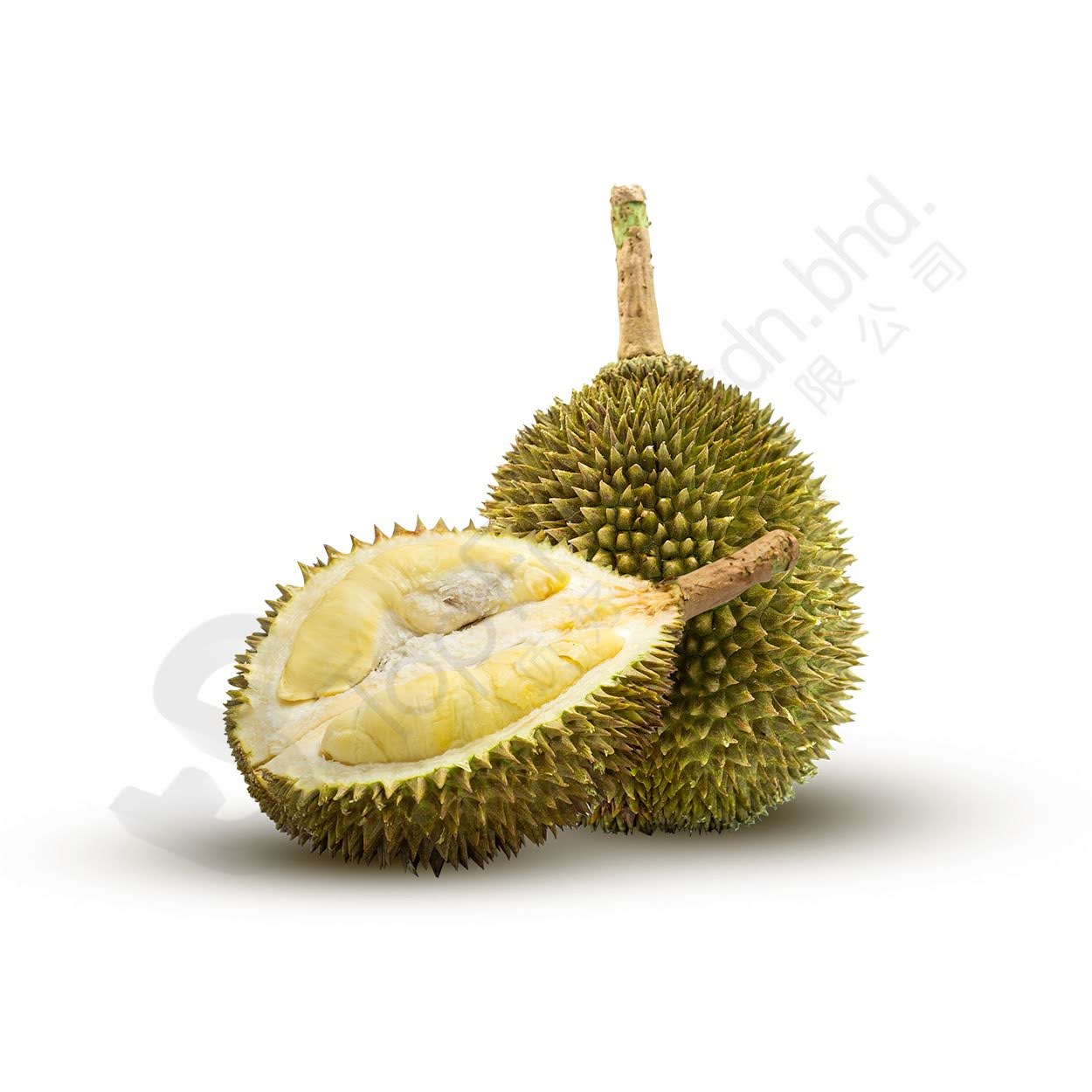
Image source: Top Fruits
The D198 Golden Phoenix durian, also known as Jin Feng (金鳳) in Mandarin, is a prized variety known for its exceptional flavor and rare breed, requiring specific cultivation methods.
Nicknamed as the ‘poor man’s Mao Shan Wang’, this durian variety offers a more affordable alternative with a flavor profile that some find reminiscent of the king of durians.
- Code: D198
- Origin: Johor, Malaysia.
- Shape: Typically round or slightly oval in shape.
- Spikes: Short and sparse spikes that are a greenish-brown color and are less prominent compared to other durian varieties.
- Flesh: Vibrant golden hue that can vary slightly depending on ripeness.
- Texture: Smooth, creamy, and custard-like texture, with minimal to no fiber.
- Taste: Known for its intense sweetness with a hint of fermented or alcoholic undertones, balanced by a subtle bitterness that lingers on the palate.
- Seed Size: Small seeds.
- Season: May to early August.
DKP Kampung
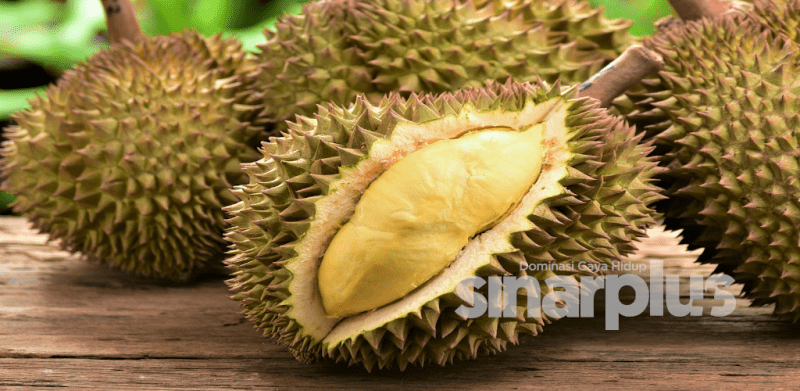
Image source: sinarplus
The DKP Kampung durian, also known as the ” kampung durian” (referring to a village or rural setting), is a well-regarded local variety in Malaysia that have not undergone any specific breeding programs and maintain a natural genetic diversity.
- Code: DKP
- Origin: It has no singular origin as it represents a collection of local durian cultivars grown in villages and rural areas throughout Malaysia.
- Shape: Varies in shape depending on the specific sub-variety.
- Spikes: Moderately sized spikes, typically green or brownish-green in color, and are spaced out evenly across the husk.
- Flesh: The color of the flesh can vary from pale yellow to a light golden yellow, with some variations depending on the specific sub-variety and ripeness.
- Texture: Creamy texture that’s softer than some commercially produced varieties but less mushy than the top-tier options.
- Taste: Balanced flavor profile of sweetness and a subtle hint of bitterness. Some describe it as having a slightly nutty or grassy taste, adding a unique dimension to its sweetness.
- Seed Size: Varies but fall within the medium-sized range.
- Season: Varies depending on the specific sub-variety and the region where it’s grown.
Black Pearl
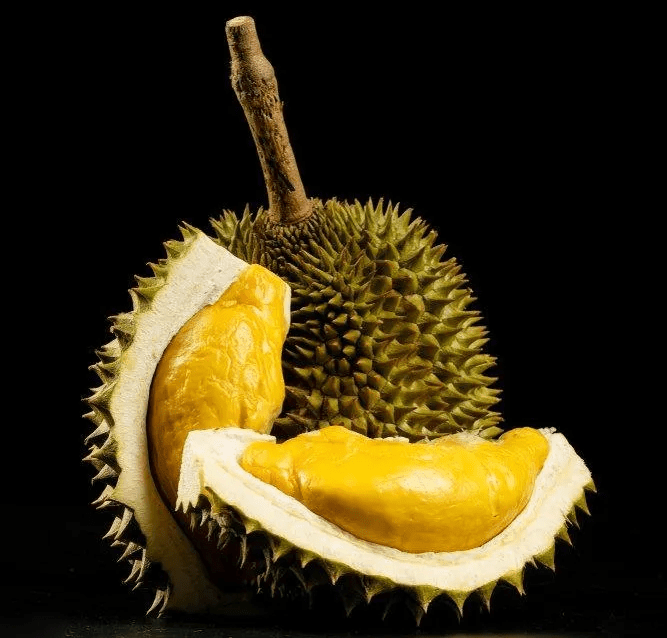
Image source: OodleEats
Forget the chewy tapioca pearls in your bubble tea!
The Black Pearl durian, a.k.a Hei Zhen Zhu (黑珍珠, meaning “Black Pearl” in Mandarin), boasts an entirely different kind of dark treasure.
- Origin: Johor, Malaysia.
- Shape: Round or slightly oval in shape.
- Spikes: This is where the Black Pearl gets its name! The outer husk is covered in dense, short, and blunt spikes that are almost black or dark brown. These spikes are a distinctive feature compared to other durians’ usual green or brownish spikes.
- Flesh: The flesh is a pale yellow or light golden yellow, with some variations depending on ripeness.
- Texture: Creamy and slightly sticky texture, with a good balance between firmness and softness.
- Taste: It’s known for its sweetness, but unlike other varieties, it is not overpowering. There’s a distinct bittersweet aftertaste that lingers on the palate.
- Seed Size: Varies but is generally on the smaller size compared to some other durians, allowing for a good amount of flesh in each bite.
- Season: Between the end of May and the end of July.
D168 IOI
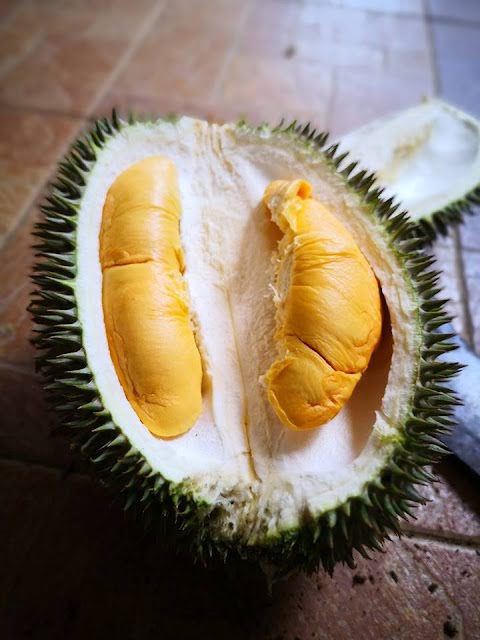
Image source: Durio Tourism
The D168 IOI durian is a commercially produced variety known for its consistent quality and reliable yield.
Here’s a breakdown of its characteristics:
- Code: D168 IOI
- Origin: Muar, Johor, Malaysia.
- Shape: Round or oval in shape, with a slightly elongated form.
- Spikes: The outer husk of the IOI durian is covered in moderately sized spikes that are typically green or brownish-green in color and are spaced out evenly across the husk.
- Flesh: Medium-thick flesh that is pale to light golden yellow.
- Texture: Creamy and soft texture.
- Taste: It is similar to the Black Pearl durian but is often described as slightly nutty or grassy, adding a subtle complexity to its sweetness.
- Seed Size: Medium-sized but not as small as some premium varieties and not excessively large.
Red Prawn
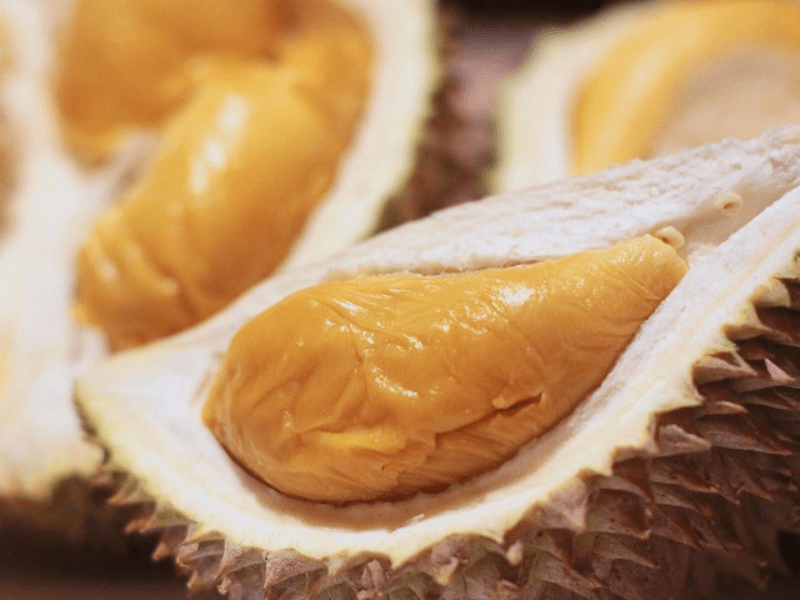
Image source: Flickr
The Red Prawn durian, aptly named for its vibrant flesh color and prawn-like pod shape, is a prized variety known for its unique characteristics.
- Origin: Penang, Malaysia.
- Shape: Unlike most durians, which are round or oval, the Red Prawn boasts a distinctive elongated form with a slight curve, resembling a plump prawn.
- Spikes: It has sparse and sharp spikes that are often green or brownish-green in color (less prominent compared to some other durian varieties).
- Flesh: The true star of the Red Prawn is its vibrant reddish-orange to salmon pink, justifying its name. This unique hue is less common in other durian varieties.
- Texture: It has a soft and melt-in-your-mouth texture, much like creamy custard
- Taste: Sweet with a subtle hint of bitterness that lingers on the palate. Some describe it as having a fruity or floral aroma.
- Seed Size: Small-sized compared to some other varieties.
Tekka
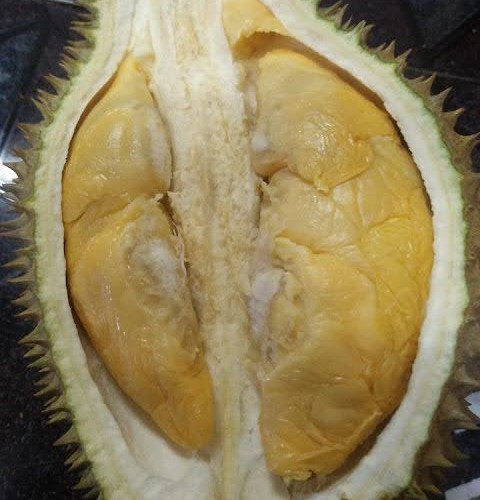
Image source: Durio Tourism
Steeped in Malaysian history, the Tekka durian, has deep roots connected to the bustling Tekka Market in Kuala Lumpur.
- Code: D160
- Origin: Tanjung Sepat, Selangor, Malaysia.
- Shape: Ellipsoidal, lopsided, or even heart-shaped, with a short stem.
- Spikes: It is covered in sharp, pointed spikes ranging from green to brown to yellow.
- Flesh: The color of the flesh can range from a pale cream white to vibrant turmeric yellow.
- Texture: Thick, soft, and creamy.
- Taste: It has a sweet taste with a hint of bitter note.
- Seed Size: Large seeds.
- Season: August (Peak)
XO
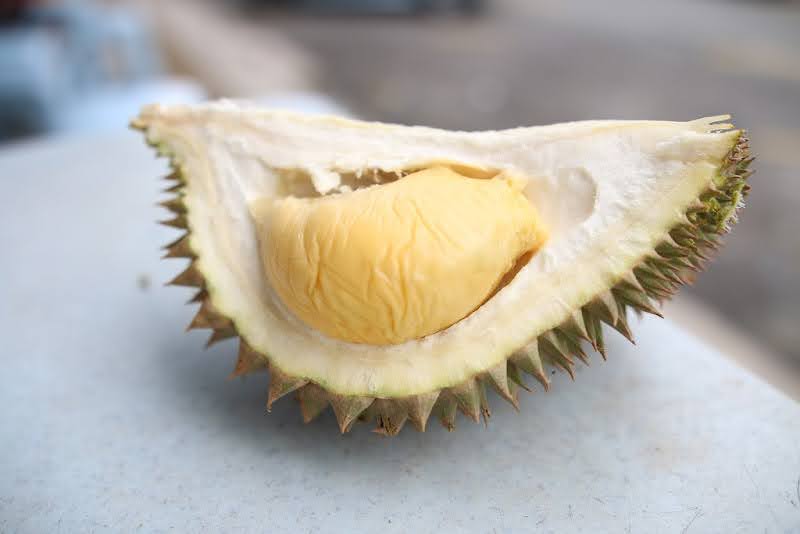
Image source: Malaysia Most Wanted Food
The XO Durian, dubbed the “King of Bittersweet” or “Lao Jiu” (meaning “old wine” in Mandarin), is a complex and intriguing variety prized by durian connoisseurs for its unique flavor profile.
Here’s a breakdown of its characteristics:
- Code: D24 is the official code sometimes associated with XO durian.
- Origin: Pahang, Malaysia.
- Shape: The shape of XO durians varies from round to oval, with a flat bottom.
- Spikes: It has moderately sized spikes which are typically green or brownish-green, and are spaced out evenly across the husk.
- Flesh: The color of the flesh can range from a pale yellow to a deep, almost golden yellow, with some variations depending on ripeness and the specific sub-variety.
- Texture: It boasts a creamy and soft texture, similar to other high-quality varieties.
- Taste: Unlike many sweet durians, the XO offers a strong and complex bitterness that is often balanced by a subtle sweetness, with some hints of fermented or alcoholic undertones.
This unique combination is why it’s called “King of Bittersweet” or “Lao Jiu.” - Seed Size: The seed size can vary depending on the sub-variety but they generally fall within the medium range, with some larger seeds compared to premium varieties like Musang King.
Conclusion
We hope our list of must-try Malaysian varieties will put you on the trail of the king of fruits in all its glory!
Experience durian’s magic at first hand with Top Fruits! Our years of expertise in durian has allowed us to curate the best durian products in more ways than one for you!
Go beyond the whole fruit and indulge in delectable creations like Musang King Cotton Light Cheesecake, Durian Gelato, and decadent Swiss Rolls.
Ready to embark on a delicious durian adventure? Contact us today! Our experts will help you fix your durian cravings in no time.
FAQ
1) What is the best durian in Malaysia?
There’s no single “best” durian in Malaysia, as taste is subjective and different varieties offer unique characteristics. Each variety of durians has its unique flavor profile, texture, and characteristics.
However, here are some top contenders often considered exceptional are:
- Musang King (D197): Arguably the most famous and sought-after durian.
- D200 Black Thorn Durian
- D24 Sultan King Durian
2. How do the different durian varieties differ in taste and texture?
Each durian variety has a distinct taste and texture. For example:
- D200 Black Thorn: Sweet with a slightly bitter aftertaste and a hint of alcohol, with soft and creamy flesh.
- D197 Musang King: Rich, creamy sweetness with a hint of bitterness, and incredibly thick, custard-like texture.
- D24 Sultan King: A balanced bittersweet taste with hints of alcohol, featuring thick and creamy flesh.
- D198 Golden Phoenix: Intense sweetness with a hint of fermented undertones, and smooth, custard-like texture.
3. When is the best season to find these durian varieties in Malaysia?
The best seasons vary for each durian variety:
- D200 Black Thorn: Late July or early August.
- D197 Musang King: Peak season in June and July, with earlier and extended seasons in specific regions.
- D24 Sultan King: Generally found from December to February.
- D198 Golden Phoenix: May to early August.

